CrystalDiskMark and various deviations
That the stick will not behave like a normal SSD due to its size was already clear to me in advance. The usual constellation of controller, DRAM buffer, pSLC cache and TLC NAND will not exist here. Nevertheless, it is interesting to see what happens when you vary the file size in CrystalDiskMark between 1 GB and 32 GB. While everything still seems fine in the usual 1 GB test, the write rates then collapse in the test with 4 to 8 GB, while it then affects the read rates with 16 and 32 GB.
In the end, no one can really explain it to you, but it is reproducible. I had previously filled the stick to over 80% several times, deleted everything and overwritten it again with other data. So the stick was anything but empty or virgin, because that is of use for marketing at most, but not for the user. For the results it did not matter whether the stick was empty, a little, half or 2/3 full after the “burn-in”. The results were always very similar. Also, I assume that they are going for “Fast Page” here, instead of pSLC cache, which then probably explains the consistency in writing.
I assume that the engineers at Patriot have very consciously adapted the firmware to synthetic benchmarks and their peculiarities, as well as the application as a pure data stick. But this is only possible to a certain extent in the benchmarks, as the scattering of the different presets shows here very nicely.
ATTO benchmark with extreme data rates
ATTO doesn’t show the same variances as CrystalDiskMark in both the 1GB and 8GB tests, but offers the far higher read and write rates across almost all individual tests at well over 800MB/s. Of course, you can see the traces of the firmware optimization here as well, but it still works really well during normal copying of larger files or streaming even in everyday use. We will see in a moment that this is not just cheating at the highest level.
AJA Video Benchmark
Now, for the first time, it becomes only semi-synthetic and a bit more practically relevant, as the AJA benchmark also serves system houses and commercial testers as an incorruptible benchmark for suitability in the video and streaming sector. And that’s where the writing is quite amazing. Apart from the fact that I had already recorded a longer 4K video myself in my own studio and everything went fine, the achieved values are quite commendable, as they turned out quite constant except for the periodic small air tolerances:
This is also reflected in the curve over the longer 64 GB test, which didn’t reveal any cache problems:
When reading, however, we see the same effect as already in CrystalDiskMark, where the read rate drops abruptly after a certain file size or runtime. For this, too, I first have the pure numerical values as an overview, even if the dips here are significantly smaller than in the purely synthetic test.
Of course, I also have the curve for this, which shows very vividly at what point the rate drops a bit (from about 42 GB stream). Whereby even then you are still well above the guaranteed 600 MB/s and really can’t complain:
All these values are almost within the range of what I could also achieve with the external SSD and you will wonder why I did not make the comparison in the end. The answer is now on the next and last page.















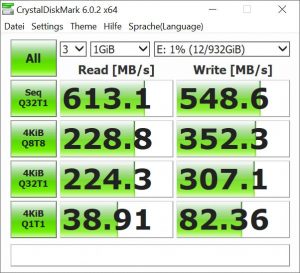
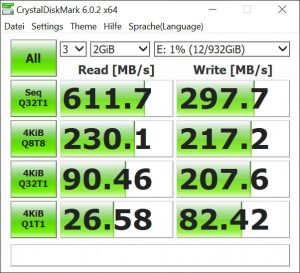
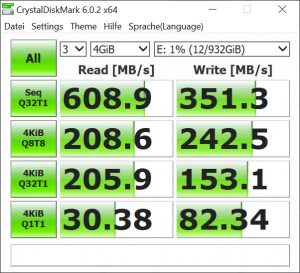
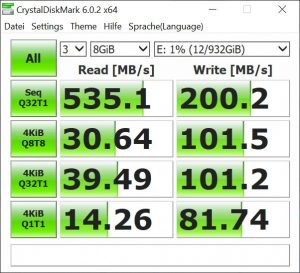
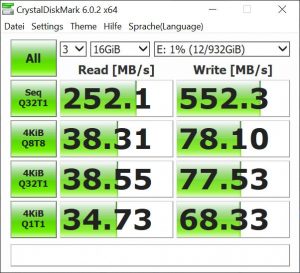
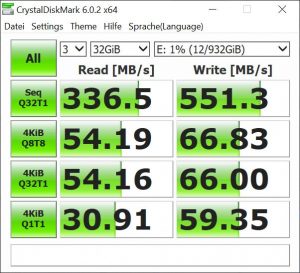
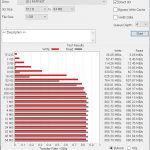
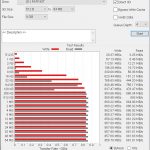
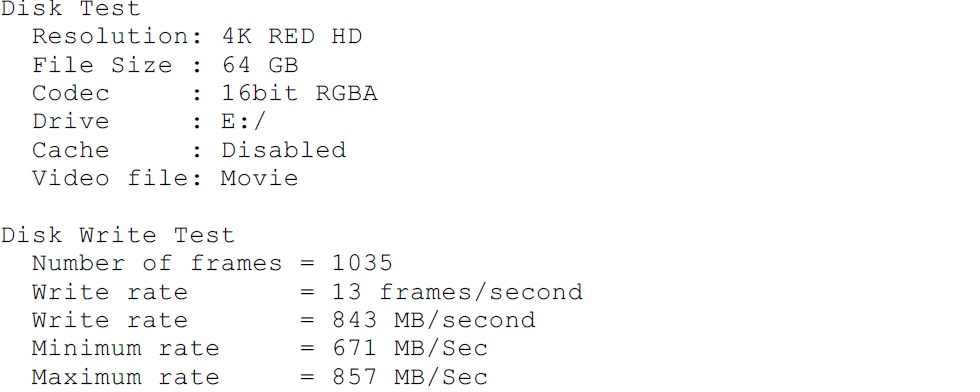
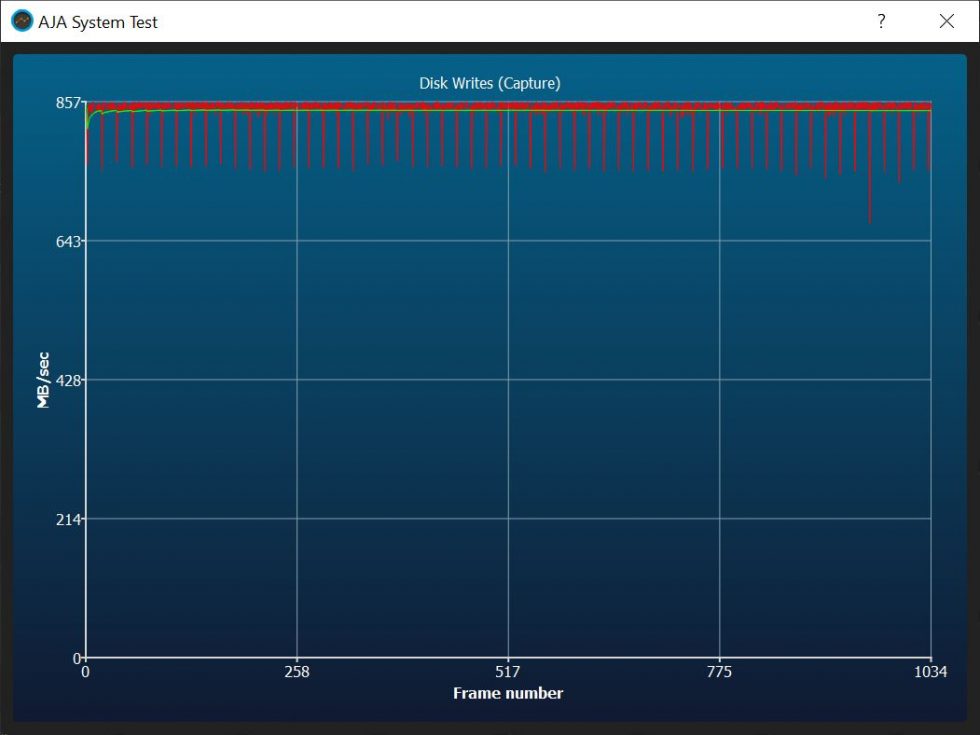

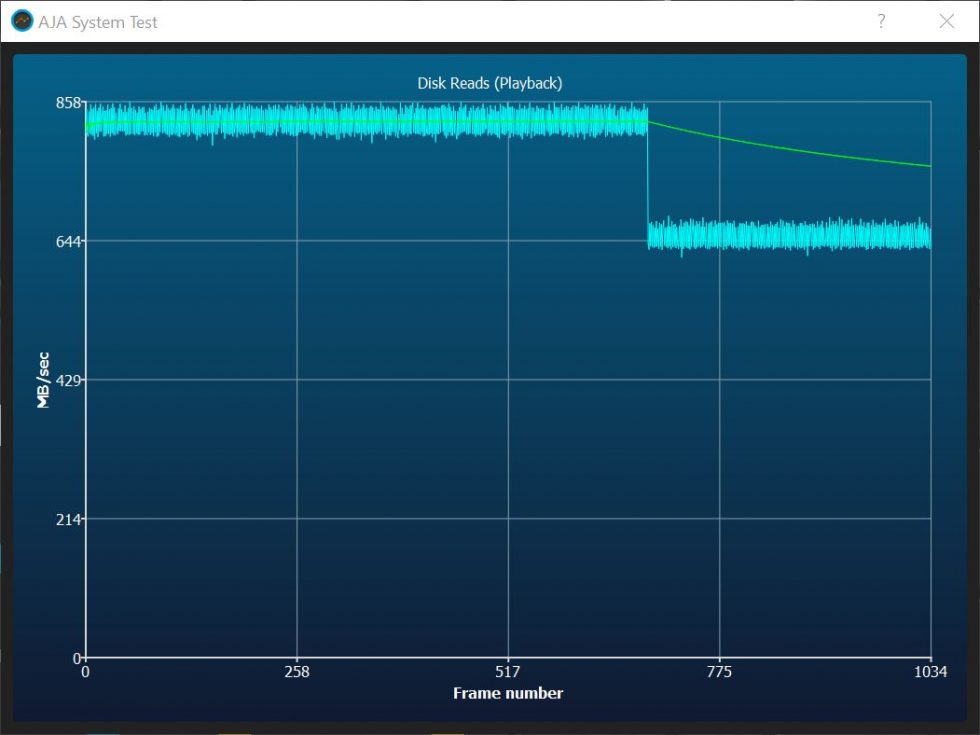



















12 Antworten
Kommentar
Lade neue Kommentare
Veteran
1
Veteran
Mitglied
Veteran
Urgestein
Moderator
Mitglied
Neuling
Urgestein
1
Urgestein
Alle Kommentare lesen unter igor´sLAB Community →